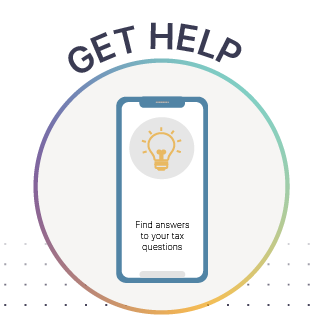If you are claiming a qualifying child:
- You can’t be a qualifying child of another person;
- The qualifying child must have a Social Security Number (SSN);
- The child generally can’t be married;
- Your qualifying child can’t be used by more than one person to claim the CTC; and
- The child must pass relationship, age, residency, and joint return tests.
Relationship Test
The child must be related to you.
Many different relationships qualify for CTC, including:
- Son or daughter (whether by blood or adoption), stepchild, qualified foster child, or their descendants (grandchild or great-grandchild), or
- Full, half, and step-siblings or their descendants (niece or nephew), or
- This means some relationships aren’t covered. For instance, you can’t claim the child of your boyfriend/girlfriend, a neighbor, or a cousin even if you provide care for that child.
Age Test
The child must be:
- Under age 17 at the end of the tax year and younger than you (or your spouse, if filing jointly), o
Residency Test
The child must have lived with you in the United States for more than half of the tax year. This doesn’t mean six months in a row. For example: If your child lives with you during the school year but spends summers elsewhere, the months the child lives with you count toward the six months. The IRS also recognizes that temporary absences of the taxpayer or the qualifying child due to a special circumstance (such as illness, school attendance, business, vacation, military service, or detention in a juvenile facility) may count as time the child lived with the taxpayer.
You may need to show the IRS that you’re entitled to the EITC.
The IRS may send you a notice asking you to provide documents to show you’re entitled to claim the credit. The notice you get will tell you the documents you need to send to claim the credit (birth certificates, school records, etc.).
You may use these templates to get the requested information from the school, healthcare provider, or childcare provider to verify your qualifying child’s residency.
Sometimes you may not have the specific types of documents requested by the IRS. IRS Form 886-H-EIC, Documents You Need to Send to Claim the Earned Income Tax Credit on the Basis of a Qualifying Child or Children, lists many options, but remember that different combinations may also be acceptable. The IRS has developed a toolkit to help you identify what documents you might provide to the IRS to determine if your child is a qualifying child.
Let’s say the IRS wants medical records to show the child lived with you during the year in question, and you can’t get those, or your child didn’t go to the doctor. There may be other records that show your child lived with you, such as social service records, childcare provider records, or official mail addressed to the child. You may want to check to see if there’s an agency that has a record of your address and any additional information that shows the child lived with you. If so, it may be able to give you a signed letter on their official letterhead showing these details.
A certain document alone generally doesn’t show you are entitled to receive the credit, but in combination with other records, it can demonstrate that you are entitled to the credit.
Note: If you get school records to verify one or more of the tests, remember a school “year” really is just part of the calendar year because school starts in the autumn of one calendar year and ends in the spring of the next calendar year. You’d need to ask for two school years to cover one calendar year. You might have to get the school to write a letter, rather than provide just the transcripts, to show the child’s guardian during the calendar year and the address on record during that time.
Special Rules
The PATH Act prevents you from filing retroactive returns or amended returns claiming EITC, ACTC, or the American Opportunity Tax Credit (AOTC) if the reason you are filing is because you now have the type of valid Taxpayer Identification Number (TIN) required for each credit but didn’t have such TIN before the due date of the return.
If for any reason you or one of your family members didn’t receive a valid “taxpayer identification number” by the due date of the tax return (including extensions), you cannot file a past due return or an amended return to claim any of these credits. A valid taxpayer identification number could be an SSN, Individual Taxpayer Identification Number (ITIN), or Adopted Taxpayer Identification Number (ATIN) depending on the requirement for each credit.
You can’t file a past due return or an amended return to claim the CTC or ACTC for anyone on the return without an SSN that’s valid for employment by the due date of the return including a valid extension.
To claim the credit, file your tax return
To claim the credit, if eligible, you must file a tax return – whether you normally need to file or not. If you qualify for the CTC, you may also qualify for the EITC. You need to complete an IRS Form Schedule EIC, Earned Income Credit and file it with your return, if you’re claiming a qualifying child. If you don’t have a qualifying child, you claim the credit on your tax return.
If you need free help preparing your tax returns, type “Free Tax Prep” in the search box on www.IRS.gov and use the Volunteer Income Tax Assistance (VITA) locator tool to find a volunteer site near you. You can also prepare and electronically file your own tax return with professional software using the IRS’s Free File program.
While the IRS is asking for additional information, it will hold your refund (Credit)
Any refund you receive because of the ACTC or EITC isn’t counted as income in determining whether you are eligible for federal or federally funded public benefits or assistance.
You will be banned from claiming the credit for two years if you improperly claimed the credit due to reckless or intentional disregard of rules or regulations and for ten years if you claimed the credit due to fraud. Thus, filing a tax return with an error on your ACTC or EITC may cause the EITC to be disallowed in subsequent years. See Consequences of Errors on Your EITC Returns.



